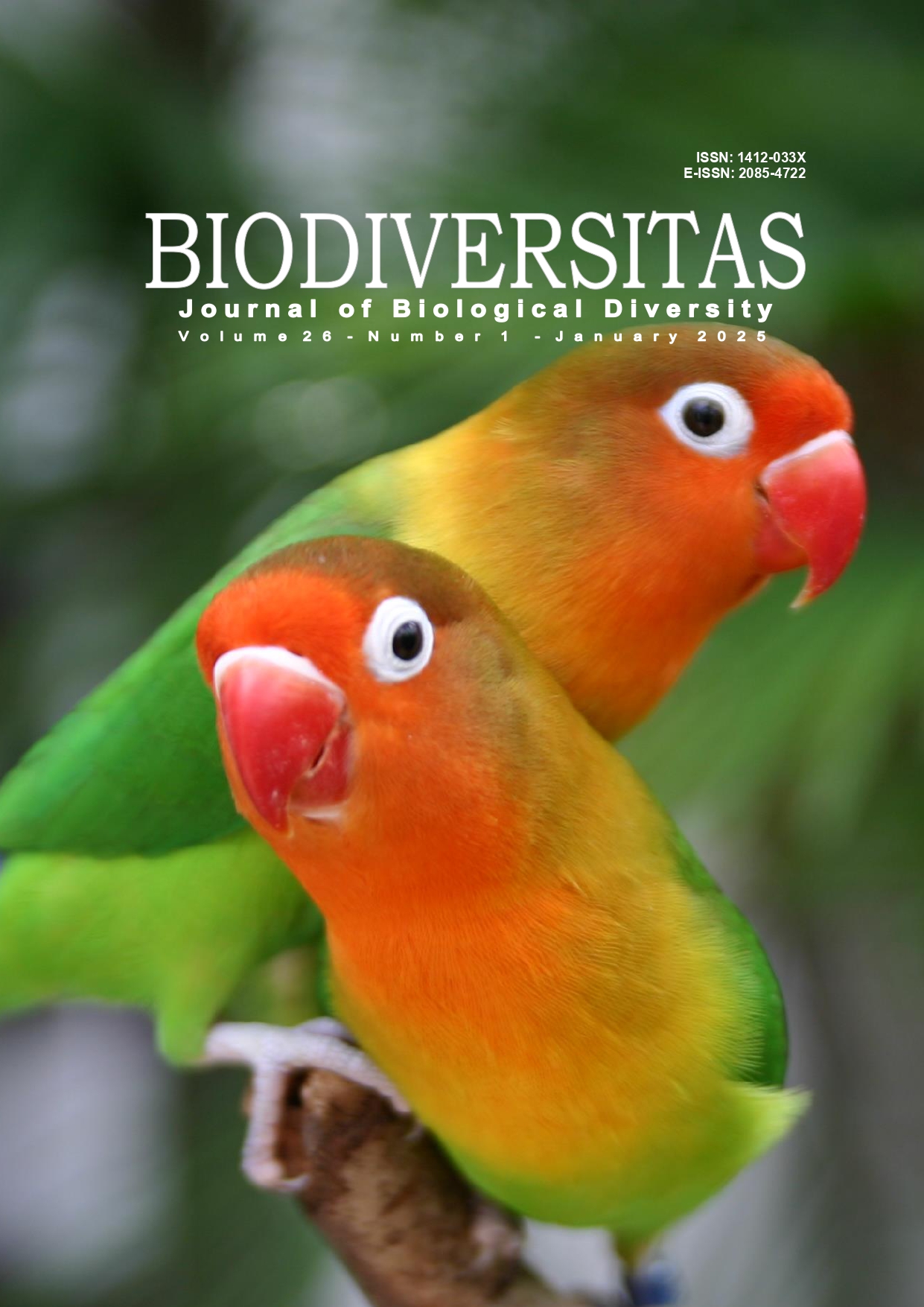Exploring the diversity of cellulolytic microorganisms from tea factory waste and evaluating their potential in breaking down tea waste
##plugins.themes.bootstrap3.article.main##
Abstract
Abstract. Sembiring M, Mukhlis, Razali, Hidayat B. 2025. Exploring the diversity of cellulolytic microorganisms from tea factory waste and evaluating their potential in breaking down tea waste. Biodiversitas 26: 377-385. The rate at which organic materials decompose is influenced by their cellulose, lignin, and hemicellulose content. To accelerate the decomposition process, cellulolytic microorganisms can be employed, which can be isolated from organic materials. Tea plants, as a significant plantation commodity, produce various types of waste during processing, including solid, liquid, and gas wastes. Solid waste from tea factories is produced in large quantities year-round and has substantial potential as a source of organic material. This research aimed to find cellulolytic microbes that were sourced from tea waste and have superior potential in the decomposition of organic matter, especially tea waste. The research involved several stages: isolating microbes from semi-processed waste from the Bah Butong tea factory, purifying the microbes to obtain pure isolates, testing the semi-qualitative potency of these isolates on CMC (Carboxyl methyl cellulase) media, and assessing the degradation potential of the superior isolates on raw tea factory waste. The research findings revealed the presence of five bacteria and two fungi from tea factory waste that have potential as decomposer microbes: Enterobacter oligotrophicus (AS), Stenotrophomonas maltophilia H05 (BS), S. maltophilia (CS), Priestia megaterium (DS), Methylophilus methylotrophus (ES) and cellulolytic fungi Aspergillus fumigatus (J1) and Aspergillus corrugatus (J2). Overall, the use of these cellulolytic bacteria and fungi can accelerate the decomposition of tea factory waste, with compost nitrogen content increasing by 102%. The application of Aspergillus corrugatus (J2) and Methylophilus methylotrophus (ES) is the best treatment with the lowest C/N ratios and the highest total nitrogen content.
##plugins.themes.bootstrap3.article.details##
Most read articles by the same author(s)
- MARIANI SEMBIRING, T. SABRINA , Diversity of non-symbiotic nitrogen-fixing bacteria and their potential in andisols affected by the eruption of Mount Sinabung, North Sumatra, Indonesia , Biodiversitas Journal of Biological Diversity: Vol. 22 No. 8 (2021)
- MARIANI SEMBIRING, HIDAYATULAH MUNAWAROH, MUKHLIS, BENNY HIDAYAT, TENGKU SABRINA , Soil macrofauna diversity in andisol after eight years of Mount Sinabung eruption in Sumatra, Indonesia , Biodiversitas Journal of Biological Diversity: Vol. 22 No. 6 (2021)
- MARIANI SEMBIRING, T. SABRINA, Diversity of potassium solving microbes on andisol soil affected by the eruption of Mount Sinabung, North Sumatra, Indonesia , Biodiversitas Journal of Biological Diversity: Vol. 23 No. 4 (2022)
- MARIANI SEMBIRING, T. SABRINA, Diversity of phosphate solubilizing bacteria and fungi from andisol soil affected by the eruption of Mount Sinabung, North Sumatra, Indonesia , Biodiversitas Journal of Biological Diversity: Vol. 23 No. 2 (2022)
- MARIANI SEMBIRING, TENGKU SABRINA, Effectiveness of Dyella japonica and Enterobacter cloacae as biofertilizers to increase maize (Zea mays) production on andisol soil , Biodiversitas Journal of Biological Diversity: Vol. 23 No. 7 (2022)

